#cephalocereus
Explore tagged Tumblr posts
Text
Aïe, aïe, aïe ! Ça pique au Jardin de Cactus de Lanzarote
Aïe, aïe, aïe ! Ça pique au Jardin de Cactus de Lanzarote
Voici une découverte que j’ai vraiment adoré! Cette visite doit incontestablement faire partie de vos incontournables lors de votre séjour à Lanzarote, c’est indéniable! Imaginez-vous : vous vous retrouvez au cœur d’une plantation de plus de 4500 cactus avec plus de 1400 espèces différentes ! Ça vous pique hein?? Il y a de quoi! Le Jardin de Cactus est un lieu emblématique de l’île. Nombreux sont…

View On WordPress
#Aéonium#Agave Shawii#Aller au Jardin de Cactus Lanzarote#Arbre pieuvre#Art César Manrique#Attractions phares Lanzarote#Biographie César Manrique#Blog Voyage Lanzarote#Cact Lanzarote#CACT Lanzarote tarif#Cactus Lanzarote#Centre Naturel Lanzarote#Cephalocereus Senilis#César Manrique#Cojines de Suegra#Coussin de Belle-Mère#Création de César Manrique#Echinocactus Grusonii#Euphorbia Candelabrum#Ferocactus Pilosus#Gofio Lanzarote#Goûter du cactus#Hembra y Macho#Jardin de Cactus#Jardin de Cactus César Manrique#Jardin de Cactus Guatiza#Jardin de Cactus Lanzarote#Jardin de Cactus Tarif#Lanzarote Blog#le Jardin de Cactus
8 notes
·
View notes
Note
My cousins are Iraqi, and due to Iraqi genetics they're very hairy. We went to the botanical gardens the other day, and saw some cephalocereus senilis cacti, and we all joked that they must be Iraqi due to how hairy they are.
I think you described yourself as being like a walking shag carpet or something similar at some point recently, and it reminded me of my cousins and this story
W for cross-cultural connections, ig.
14 notes
·
View notes
Text

Pilosocereus leucocephalus (Cephalocereus)
Common Name(s): Old Man Cactus, Old Man of Mexico
50 notes
·
View notes
Text
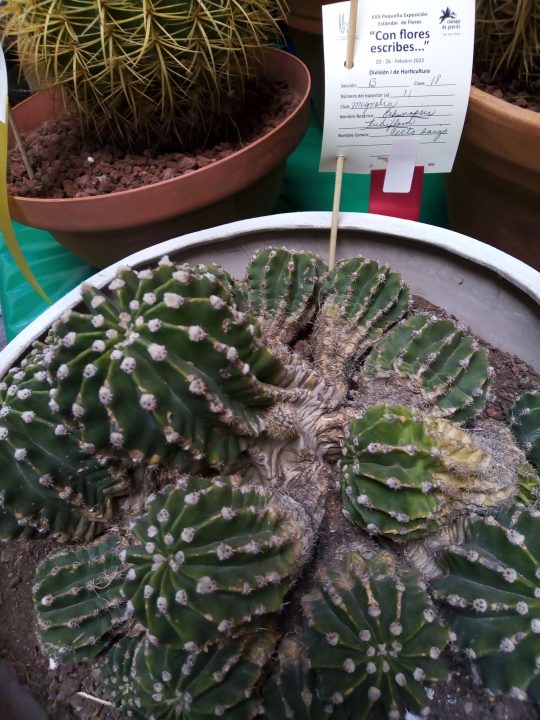
Echinopsis tubiflora, CACTUS ERIZO

Echinocactus grusonii, ASIENTO DE SUEGRA/BOLA DE ORO

Cephalocereus senilis, CACTUS VIEJITO

Astrophytum ornatum, CACTUS ESTRELLA

Astrophytum myriostigma, BONETE DE OBISPO
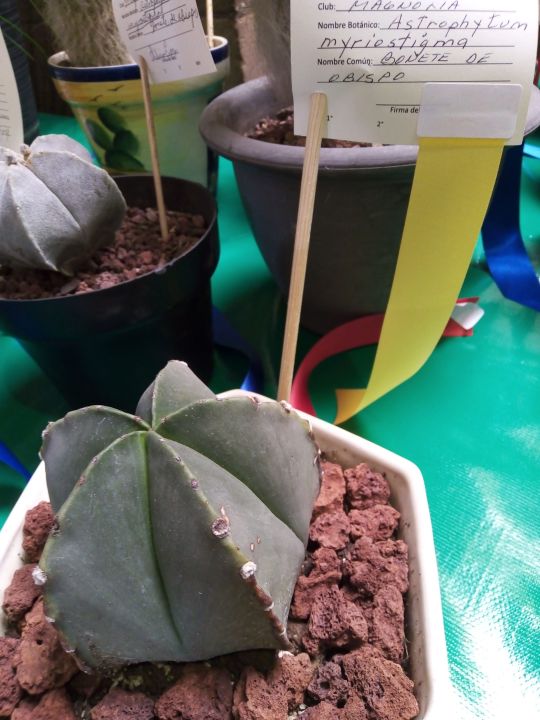
Astrophytum myriostigma nudum, BONETE

Mammillaria uncinata, BIZNAGA GANCHUDA
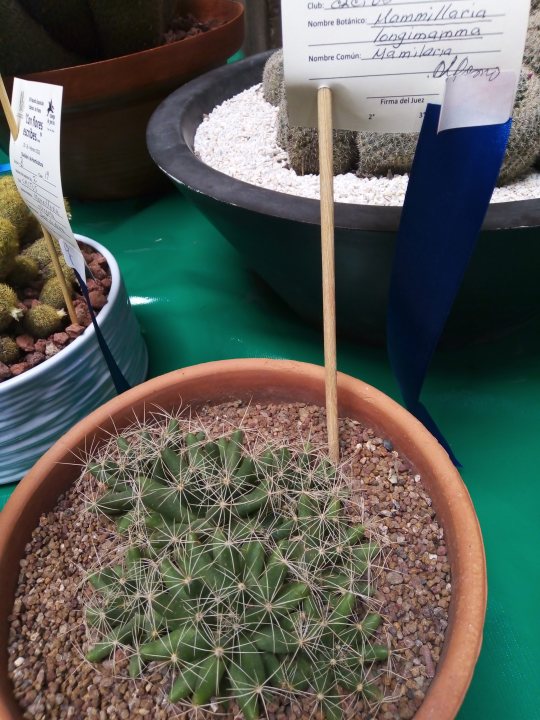
Mammillaria longimamma, BIZNAGA DE DEDOS LARGOS

Mammillaria Spinossisima (saetigera?) ,BIZNAGA
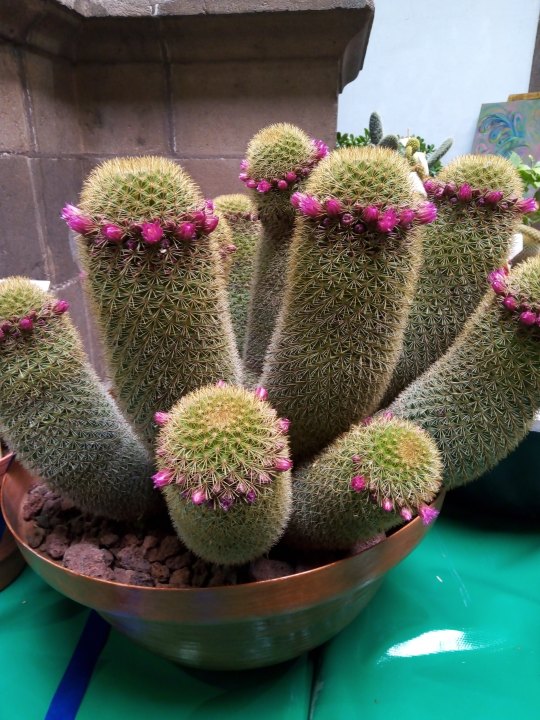
Mammillaria spinosissima pilcayensis, CACTUS CEPILLO
ESPECIES DESÉRTICAS EN SLP, MÉXICO.
6 notes
·
View notes
Text
Top 7 Các Loại Xương Rồng Hiếm Nhất Trên Thế Giới

Trong thế giới thực vật rộng lớn, có một loại cây đặc biệt thu hút sự chú ý của người yêu cây cảnh và nhà vườn - đó chính là các loại xương rồng hiếm. Được biết đến với sự độc đáo và sự đa dạng trong hình dáng, màu sắc và kích thước. Hãy cùng Blog Bí Mật khám phá những điều thú vị về các loại xương rồng hiếm độc đáo này và lý do tại sao chúng lại thu hút ánh nhìn của mọi người nhé!
Top 7 Các loại xương rồng hiếm nhất trên thế giới
Có rất nhiều loại xương rồng quý hiếm, nhưng đây là 7 các loại xương rồng hiếm nhất: Xương rồng Espostoa lanata, xương rồng Pilosocereus azureus, Xương rồng Discocactus pectinatus... Xương rồng Espostoa lanata: Loại xương rồng này có nguồn gốc từ Mexico và có đặc điểm là thân hình trụ màu trắng được bao phủ bởi những chiếc gai trắng mịn. Nó có thể phát triển cao tới 3 feet và nở hoa màu vàng hoặc cam vào mùa hè.
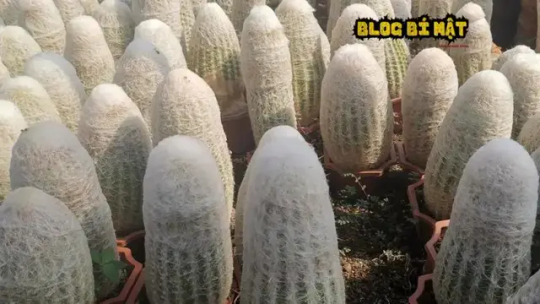
Các loại xương rồng hiếm Xương rồng Pilosocereus azureus: Loại xương rồng này có nguồn gốc từ Nam Mỹ và có đặc điểm là thân màu xanh lam sáng. Nó có thể phát triển cao tới 10 feet và có hoa màu trắng hoặc hồng vào mùa hè. Xương rồng Discocactus pectinatus: Loại xương rồng này có nguồn gốc từ Mexico và có đặc điểm là thân hình phẳng, trông giống như hình đĩa được bao phủ bởi gai. Nó có thể phát triển tới 6 inch và nở hoa màu vàng hoặc cam vào mùa hè. Xương rồng Astrophytum asterias: Loại xương rồng này có nguồn gốc từ Mexico và có đặc điểm là thân hình ngôi sao. Nó có thể phát triển tới 6 inch và nở hoa màu vàng vào mùa hè. Xương rồng Echinocactus grusonii: Loại xương rồng này có nguồn gốc từ Mexico và có đặc điểm là thân hình cầu được bao phủ bởi gai vàng. Nó có thể phát triển cao tới 3 feet và nở hoa màu vàng vào mùa hè.

Các loại xương rồng hiếm Xương rồng Aztekium: Những loại cây xương rồng hiếm này có thân hình cầu đặc biệt, ít xương sườn và kích thước độc đáo, phù hợp để trồng trong chậu suốt cuộc đời. Với đường kính khoảng 10 cm và chiều cao từ 6 đến 10 cm, chúng tạo ra một diện mạo độc đáo trong không gian sống. Không chỉ vậy, chúng còn làm say đắm trái tim của mọi người với những bông hoa xinh đẹp, màu hồng nhạt rực rỡ. Xương rồng Cephalocereus senilis: Các loài Cephalocereus senilis là những loại xương rồng dạng cột đặc biệt có khả năng phát triển lên đến chiều cao từ 5 đến 15 mét, thường không phân nhánh (và chỉ khi chúng già mới có thể xuất hiện những phân nhánh). Thân cây của chúng được phủ bởi những sợi lông trắng mịn, như một lớp vỏ bảo vệ chống lại tác động của tia nắng mặt trời. Tất cả các loại cây xương rồng này đều tương đối khó tìm và có thể đắt tiền để mua. Tuy nhiên, chúng là những bổ sung độc đáo và đẹp mắt cho bất kỳ bộ sưu tập xương rồng nào.
Xương rồng là gì?
Xương rồng là một họ thực vật mọng nước, có tên khoa học là Cactaceae. Chúng thường có thân mọng nước, gai nhọn và ít lá hoặc không có lá. Xương rồng có nguồn gốc từ châu Mỹ, chủ yếu là ở các vùng sa mạc và bán sa mạc. Đặc điểm của cây xương rồng
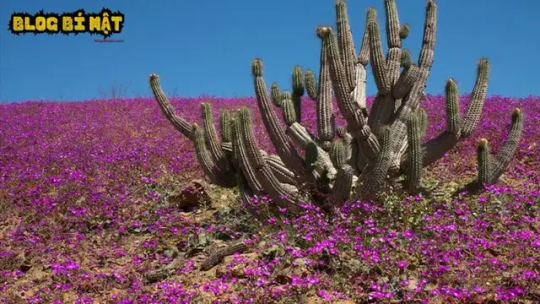
Các loại xương rồng hiếm - Thân mọng nước: Xương rồng có khả năng trữ nước trong thân do cấu tạo đặc biệt. Lớp biểu bì dày giúp hạn chế thoát nước, mô mềm chứa nhiều nước và chất dinh dưỡng giúp cây sống sót trong điều kiện khô hạn. - Gai nhọn: Gai nhọn của xương rồng có nhiều chức năng, bao gồm bảo vệ cây khỏi động vật ăn cỏ, giảm bớt sự bốc hơi nước và giúp cây hấp thụ sương mù. - Ít lá hoặc không có lá: Lá của xương rồng thường tiêu giảm thành gai nhọn để hạn chế thoát nước. - Hoa: Xương rồng có nhiều loại hoa với màu sắc đa dạng, thường nở vào mùa xuân hoặc mùa hè. - Quả: Quả của xương rồng thường có nhiều hạt và có thể ăn được. Công dụng của cây xương rồng - Cây cảnh: Xương rồng được trồng trong nhà làm cảnh hoặc ngoài trời. - Thực phẩm: Một số loại quả xương rồng có thể ăn được, ví dụ như quả thanh long. - Dược liệu: Một số loại xương rồng được sử dụng làm thuốc chữa bệnh. - Làm đẹp: Một số loại xương rồng được sử dụng để chiết xuất tinh dầu làm đẹp da. Ý nghĩa phong thủy của cây xương rồng - May mắn: Xương rồng được cho là mang lại may mắn và tài lộc cho gia chủ. - Sức khỏe: Xương rồng được cho là giúp gia chủ có sức khỏe dồi dào và tránh được bệnh tật. - Bảo vệ: Xương rồng được cho là giúp bảo vệ gia chủ khỏi tà khí và năng lượng tiêu cực.
Cách trồng và chăm sóc cây xương rồng
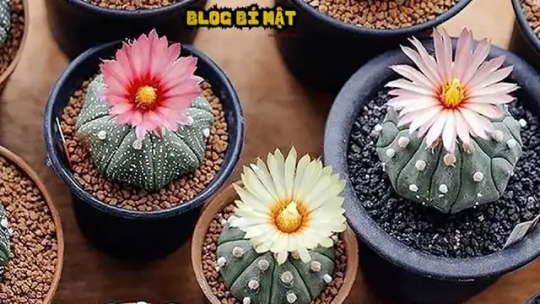
Các loại xương rồng hiếm - Đất trồng: Xương rồng cần được trồng trong đất thoát nước tốt, ví dụ như hỗn hợp cát, sỏi và tro trấu. - Ánh sáng: Xương rồng cần nhiều ánh sáng tự nhiên để phát triển tốt, nên đặt cây ở nơi có ánh sáng trực tiếp từ mặt trời. - Tưới nước: Xương rồng cần được tưới nước ít, chỉ nên tưới khi đất trồng đã khô hoàn toàn. - Bón phân: Xương rồng cần được bón phân ít, chỉ nên bón phân vào mùa xuân hoặc mùa hè. Lưu ý khi trồng và chăm sóc cây xương rồng - Cần cẩn thận với gai nhọn của cây xương rồng. - Không nên tưới nước quá nhiều cho cây xương rồng vì có thể khiến cây bị úng nước và chết. - Cần bón phân đúng loại và đúng liều lượng cho cây xương rồng.
Tên các loại xương rồng có hoa phổ biến
- Xương rồng Giáng sinh (Schlumbergera bridgesii): Loại cây này có nguồn gốc từ Brazil và nở hoa màu hồng, đỏ, cam hoặc trắng vào mùa đông. - Xương rồng Nữ hoàng đêm (Epiphyllum oxypetalum): Loại cây này có nguồn gốc từ Mexico và nở hoa màu trắng thơm vào ban đêm. - Xương rồng thanh long (Hylocereus undatus): Loại cây này có nguồn gốc từ Mexico và Trung Mỹ và nở hoa màu trắng vào ban đêm. - Xương rồng lê gai (Opuntia ficus-indica): Loại cây này có nguồn gốc từ Mexico và nở hoa màu vàng hoặc cam vào mùa hè. - Xương rồng tai thỏ (Espostoa melanantha): Loại cây này có nguồn gốc từ Mexico và nở hoa màu vàng hoặc cam vào mùa hè. - Xương rồng kim tiền (Echinocactus grusonii): Loại cây này có nguồn gốc từ Mexico và nở hoa màu vàng vào mùa hè.
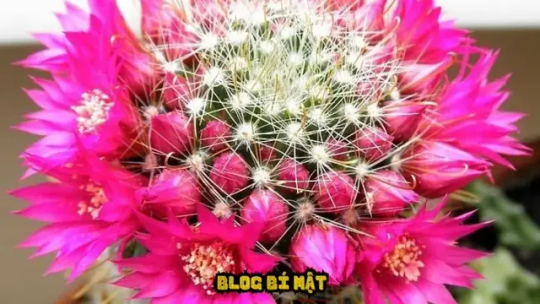
Các loại xương rồng hiếm Ngoài ra còn rất nhiều loài xương rồng đẹp khác có hoa. Các loại xương rồng có hoa có thể được tìm thấy ở nhiều kích thước, hình dạng và màu sắc khác nhau. Chúng là một bổ sung tuyệt vời cho bất kỳ khu vườn nào.
Kết luận
Trên đây là top 7 các loại xương rồng hiếm nhất trên thế giới. Đây là một nhóm thực vật đa dạng và hấp dẫn. Hy vọng bài viết này đã cung cấp cho bạn những thông tin hữu ích. Read the full article
#cácloạicâyxươngrồng#cácloạixươngrồng#cácloạixươngrồnghiếm#têncácloạixươngrồng#têncácloạixươngrồngcóhoa
0 notes
Text

CAKEP WA/CALL: 0813-2424-7264 (THORIQ) Hiasan jual kaktus koboi terdekat Siap Kirim Ke Lima Puluh Kota, Sumatera Barat TukangKaktus.
TukangKaktus ialah sebuah toko yang didirikan pada tahun 2009 oleh Thoriq Al Fath. Ia adalah seorang pecinta alam, juga hewan. Mulai tertarik dengan tanaman kaktus pada 2008 saat dirinya memelihara kaktus di rumahnya.
TukangKaktus menyediakan macam-macam Tanaman Kaktus, antara lain adalah Ariocarpus, Cereus Tetragonus, Astrophytum, Cephalocereus Senilis, Parodia, Opuntia Microdasys, Gymnocalycium Mihanovichii, Mammillaria Elongata, Astrophytum Myriostigma, Melocactus Azureus, Kaktus Lilin, Kaktus Koboi, Mammillaria Fraileana, Echinocactus Grusonii, Pilosocereus Pachycladus, hingga Kaktus Sukulen. Tidak hanya itu, TukangKaktus juga menyediakan Bibit Kaktus, Pupuk Kaktus, dan berbagai macam alat untuk merawat tanaman Kaktus.
Tanaman yang dijual oleh TukangKaktus merupakan tanaman yang telah dirawat dengan perawatan terbaik. Selain itu, TukanKaktus juga memberikan tata cara atau tutorial memberikan perawatan yang baik untuk tanaman Kaktus, sehingga calon pembeli tidak perlu bingung cara merawat tanaman Kaktus. Tidak hanya itu, TukangKaktus juga menyediakan Bibit Kaktus, Pupuk Kaktus, dan berbagai macam alat untuk merawat tanaman Kaktus. Jika calon pembeli ingin menumbuhkan Kaktus dari bibitnya, maka TukangKaktus akan memberikan tata cara merawatnya dari bibit.
Untuk pemesanan lebih lanjut, hubungi WA/CALL 0813-2425-7264 (tomas) Alamat : Jalan-jalan tengah jalan, cakep, tiati ketabrak
0 notes
Text

cephalocereus senilis aka old man cactus
1 note
·
View note
Text
also I am pretty sure Alfredo is a Cephalocereus Ive only had him for like 3 years, also he was the roundest and fattest one on the nursery all the others where tall(ish) and skinny
anyway apparently they are slow growing and can live up to 200 years
229 notes
·
View notes
Text
Old Man Cactus
Old man cactus has developed an interesting means with which to shade itself. The long, white hair of old man cactus, Cephalocereus senilis, that protects it from sun scald in harsh climates is what make it so striking in home gardens. However, the sharp spines concealed by the hair make it more appealing from a safe distance, like in the background behind lower perennials. The white, yellow or…

View On WordPress
0 notes
Text

It’s that time of year: time to kick these kids out of the house and into the great outdoors!
#plants#succulents#cacti#plantblr#cactus#opuntia#mammillaria#echinopsis#astrophytum#stenocereus#stetsonia#cephalocereus#ferocactus#parodia#aloe#cactus aesthetic#cacti and succulents#my plants#los-plantalones
409 notes
·
View notes
Text


#succulents#cacti#succulent#greenery#my plants#plant#plantblr#plants#house plants#cacti love#cephalocereus#old man cactus#cactus arrangement#plant parent#plant mom#nature photography
18 notes
·
View notes
Photo

Cephalocereus senilis (Viejito) • • • #cephalocereussenilis #cephalocereus #senilis #viejito #cactusviejito #queretaro #hidalgo #tiendadeplantas #hechoenmexico #orgullomexicano #cactaceae #raicesmexicanas #plantas #suculentas #plantassuculentas #crassulas #succulentsandcactus #cactusandsucculents #succulentshop #tiendadesuculentas #ventadesuculentasycactus #ventadesuculentas #ventadecactus #ventadecactusysuculentas #ventadeplantas #ventadesuculentasycactuscdmx #ventadecactusysuculentascdmx #sinfiltro https://www.instagram.com/p/CTSDk90rVV7/?utm_medium=tumblr
#cephalocereussenilis#cephalocereus#senilis#viejito#cactusviejito#queretaro#hidalgo#tiendadeplantas#hechoenmexico#orgullomexicano#cactaceae#raicesmexicanas#plantas#suculentas#plantassuculentas#crassulas#succulentsandcactus#cactusandsucculents#succulentshop#tiendadesuculentas#ventadesuculentasycactus#ventadesuculentas#ventadecactus#ventadecactusysuculentas#ventadeplantas#ventadesuculentasycactuscdmx#ventadecactusysuculentascdmx#sinfiltro
0 notes
Photo

Potted cacti: Opuntia microdasys var. albispina, Cleistocactus strausii, Pilosocereus cephalocereus palmeri.
4 notes
·
View notes
Photo

Cephalocereus Senilis Botanical Garden, Dresden, Germany
#photographers on tumblr#hairy#cactus#nature#dresden#germany#flora#cephalocereus senilis#botanical garden#vertical#original photographers#original photography
61 notes
·
View notes
Text
today i found out that one of my cacti is rare and it blooms once every 10-20 years
8 notes
·
View notes
Text
Top 7 Các Loại Xương Rồng Hiếm Nhất Trên Thế Giới
Trong thế giới thực vật rộng lớn, có một loại cây đặc biệt thu hút sự chú ý của người yêu cây cảnh và nhà vườn - đó chính là các loại xương rồng hiếm. Được biết đến với sự độc đáo và sự đa dạng trong hình dáng, màu sắc và kích thước. Hãy cùng Blog Bí Mật khám phá những điều thú vị về các loại xương rồng hiếm độc đáo này và lý do tại sao chúng lại thu hút ánh nhìn của mọi người nhé! Top 7 Các loại xương rồng hiếm nhất trên thế giới Có rất nhiều loại xương rồng quý hiếm, nhưng đây là 7 các loại xương rồng hiếm nhất: Xương rồng Espostoa lanata, xương rồng Pilosocereus azureus, Xương rồng Discocactus pectinatus... Xương rồng Espostoa lanata: Loại xương rồng này có nguồn gốc từ Mexico và có đặc điểm là thân hình trụ màu trắng được bao phủ bởi những chiếc gai trắng mịn. Nó có thể phát triển cao tới 3 feet và nở hoa màu vàng hoặc cam vào mùa hè. Xương rồng Pilosocereus azureus: Loại xương rồng này có nguồn gốc từ Nam Mỹ và có đặc điểm là thân màu xanh lam sáng. Nó có thể phát triển cao tới 10 feet và có hoa màu trắng hoặc hồng vào mùa hè. Xương rồng Discocactus pectinatus: Loại xương rồng này có nguồn gốc từ Mexico và có đặc điểm là thân hình phẳng, trông giống như hình đĩa được bao phủ bởi gai. Nó có thể phát triển tới 6 inch và nở hoa màu vàng hoặc cam vào mùa hè. Xương rồng Astrophytum asterias: Loại xương rồng này có nguồn gốc từ Mexico và có đặc điểm là thân hình ngôi sao. Nó có thể phát triển tới 6 inch và nở hoa màu vàng vào mùa hè. Xương rồng Echinocactus grusonii: Loại xương rồng này có nguồn gốc từ Mexico và có đặc điểm là thân hình cầu được bao phủ bởi gai vàng. Nó có thể phát triển cao tới 3 feet và nở hoa màu vàng vào mùa hè. Xương rồng Aztekium: Những loại cây xương rồng hiếm này có thân hình cầu đặc biệt, ít xương sườn và kích thước độc đáo, phù hợp để trồng trong chậu suốt cuộc đời. Với đường kính khoảng 10 cm và chiều cao từ 6 đến 10 cm, chúng tạo ra một diện mạo độc đáo trong không gian sống. Không chỉ vậy, chúng còn làm say đắm trái tim của mọi người với những bông hoa xinh đẹp, màu hồng nhạt rực rỡ. Xương rồng Cephalocereus senilis: Các loài Cephalocereus senilis là những loại xương rồng dạng cột đặc biệt có khả năng phát triển lên đến chiều cao từ 5 đến 15 mét, thường không phân nhánh (và chỉ khi chúng già mới có thể xuất hiện những phân nhánh). Thân cây của chúng được phủ bởi những sợi lông trắng mịn, như một lớp vỏ bảo vệ chống lại tác động của tia nắng mặt trời. Tất cả các loại cây xương rồng này đều tương đối khó tìm và có thể đắt tiền để mua. Tuy nhiên, chúng là những bổ sung độc đáo và đẹp mắt cho bất kỳ bộ sưu tập xương rồng nào. Xương rồng là gì? Xương rồng là một họ thực vật mọng nước, có tên khoa học là Cactaceae. Chúng thường có thân mọng nước, gai nhọn và ít lá hoặc không có lá. Xương rồng có nguồn gốc từ châu Mỹ, chủ yếu là ở các vùng sa mạc và bán sa mạc. Đặc điểm của cây xương rồng - Thân mọng nước: Xương rồng có khả năng trữ nước trong thân do cấu tạo đặc biệt. Lớp biểu bì dày giúp hạn chế thoát nước, mô mềm chứa nhiều nước và chất dinh dưỡng giúp cây sống sót trong điều kiện khô hạn. - Gai nhọn: Gai nhọn của xương rồng có nhiều chức năng, bao gồm bảo vệ cây khỏi động vật ăn cỏ, giảm bớt sự bốc hơi nước và giúp cây hấp thụ sương mù. - Ít lá hoặc không có lá: Lá của xương rồng thường tiêu giảm thành gai nhọn để hạn chế thoát nước. - Hoa: Xương rồng có nhiều loại hoa với màu sắc đa dạng, thường nở vào mùa xuân hoặc mùa hè. - Quả: Quả của xương rồng thường có nhiều hạt và có thể ăn được. Công dụng của cây xương rồng - Cây cảnh: Xương rồng được trồng trong nhà làm cảnh hoặc ngoài trời. - Thực phẩm: Một số loại quả xương rồng có thể ăn được, ví dụ như quả thanh long. - Dược liệu: Một số loại xương rồng được sử dụng làm thuốc chữa bệnh. - Làm đẹp: Một số loại xương rồng được sử dụng để chiết xuất tinh dầu làm đẹp da. Ý nghĩa phong thủy của cây xương rồng - May mắn: Xương rồng được cho là mang lại may mắn và tài lộc cho gia chủ. - Sức khỏe: Xương rồng được cho là giúp gia chủ có sức khỏe dồi dào và tránh được bệnh tật. - Bảo vệ: Xương rồng được cho là giúp bảo vệ gia chủ khỏi tà khí và năng lượng tiêu cực. Cách trồng và chăm sóc cây xương rồng - Đất trồng: Xương rồng cần được trồng trong đất thoát nước tốt, ví dụ như hỗn hợp cát, sỏi và tro trấu. - Ánh sáng: Xương rồng cần nhiều ánh sáng tự nhiên để phát triển tốt, nên đặt cây ở nơi có ánh sáng trực tiếp từ mặt trời. - Tưới nước: Xương rồng cần được tưới nước ít, chỉ nên tưới khi đất trồng đã khô hoàn toàn. - Bón phân: Xương rồng cần được bón phân ít, chỉ nên bón phân vào mùa xuân hoặc mùa hè. Lưu ý khi trồng và chăm sóc cây xương rồng - Cần cẩn thận với gai nhọn của cây xương rồng. - Không nên tưới nước quá nhiều cho cây xương rồng vì có thể khiến cây bị úng nước và chết. - Cần bón phân đúng loại và đúng liều lượng cho cây xương rồng. Tên các loại xương rồng có hoa phổ biến - Xương rồng Giáng sinh (Schlumbergera bridgesii): Loại cây này có nguồn gốc từ Brazil và nở hoa màu hồng, đỏ, cam hoặc trắng vào mùa đông. - Xương rồng Nữ hoàng đêm (Epiphyllum oxypetalum): Loại cây này có nguồn gốc từ Mexico và nở hoa màu trắng thơm vào ban đêm. - Xương rồng thanh long (Hylocereus undatus): Loại cây này có nguồn gốc từ Mexico và Trung Mỹ và nở hoa màu trắng vào ban đêm. - Xương rồng lê gai (Opuntia ficus-indica): Loại cây này có nguồn gốc từ Mexico và nở hoa màu vàng hoặc cam vào mùa hè. - Xương rồng tai thỏ (Espostoa melanantha): Loại cây này có nguồn gốc từ Mexico và nở hoa màu vàng hoặc cam vào mùa hè. - Xương rồng kim tiền (Echinocactus grusonii): Loại cây này có nguồn gốc từ Mexico và nở hoa màu vàng vào mùa hè. Ngoài ra còn rất nhiều loài xương rồng đẹp khác có hoa. Các loại xương rồng có hoa có thể được tìm thấy ở nhiều kích thước, hình dạng và màu sắc khác nhau. Chúng là một bổ sung tuyệt vời cho bất kỳ khu vườn nào. Kết luận Trên đây là top 7 các loại xương rồng hiếm nhất trên thế giới. Đây là một nhóm thực vật đa dạng và h��p dẫn. Hy vọng bài viết này đã cung cấp cho bạn những thông tin hữu ích. Read the full article
0 notes